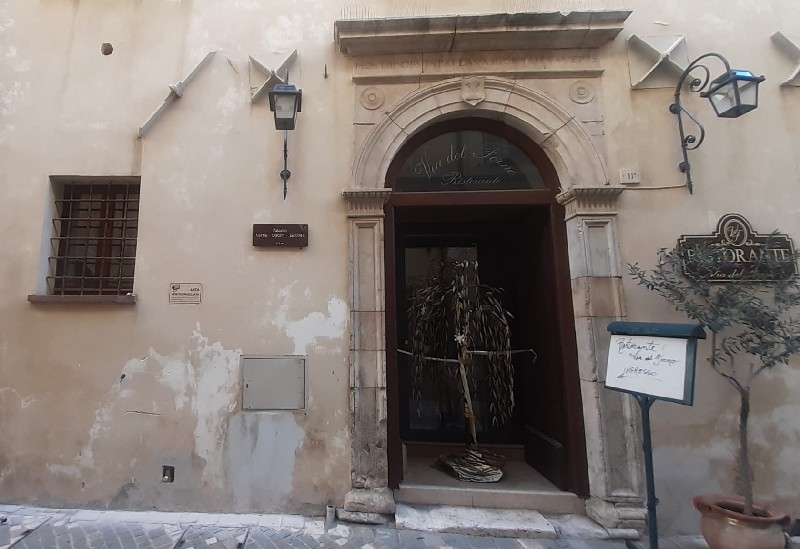The building complex that currently has its main front facing Piazza Matteotti (now the site of the "Albergo Italia"), for several centuries, and certainly since the 16th century, had its main facade on the left side of Via Colomba Antonietti, formerly Via del Forno, a narrow alley connecting with the Piazza Grande, where two beautiful portals of 16th-century workmanship are still visible, showing that the present structure was once articulated into several building units, later acquired and unified by the noted scholar and historian Lodovico Jacobilli in the first half of the 17th century.
Part of the building complex initially belonged to the Varini family, in particular, it belonged to Don Matteo Varini, in the sixteenth century, as one of the two portals on Via Antonietti, the most prestigious one, had and still has the heraldic coat of arms of the Varini family (six mounts on three orders with two lilies).
Also in the sixteenth century, the palace became the property of the Onofri family, from the patrimonial axis of Allegrezza degli Onofri, and then passed to the Jacobilli family following Allegrezza's marriage (1559) to Bernardino Jacobilli, until it came by inheritance to Lodovico Jacobilli, who lived there until his death and who purchased some neighboring houses that had belonged to the Onofri family, expanding the palace.
For reasons related to the Jacobilli lineage, the palace then passed in 1703 to the Niccolini marquises of Florence, who were succeeded between 1809 and 1815 by the Boncompagni Ludovisi, dukes of Sora and princes of Piombino.
Finally, in the first fifteen years of the twentieth century, the palace was purchased by Luigi Antonini, a baker from Foligno. There are no sources attesting to whether the interior of the palace had decorative apparatus, today only the vault of a room with a painted image of "St. Joseph" remains, probably executed in the late eighteenth century, and evidence of devotion and pictorial culture of the families who inhabited the complex.

Il progetto Divina Foligno è sviluppato nell’ambito del “programma Agenda urbana di Foligno Smart community - Comunità, Sostenibilità – Foligno 2020” intervento OT.6 INT_01 “Realizzazione della rete di attrattori culturali attraverso la realizzazione di itinerari culturali e tematici

The Divina Foligno project is promoted and financed as part of the "Urban Agenda of Foligno Smart community - Community, Sustainability - Foligno 2020 program" intervention OT.6 INT_01 "Creation of a network of cultural attractions through the creation of cultural and thematic itineraries"

Copyright © 2022 Landmark. All rights reserved.

